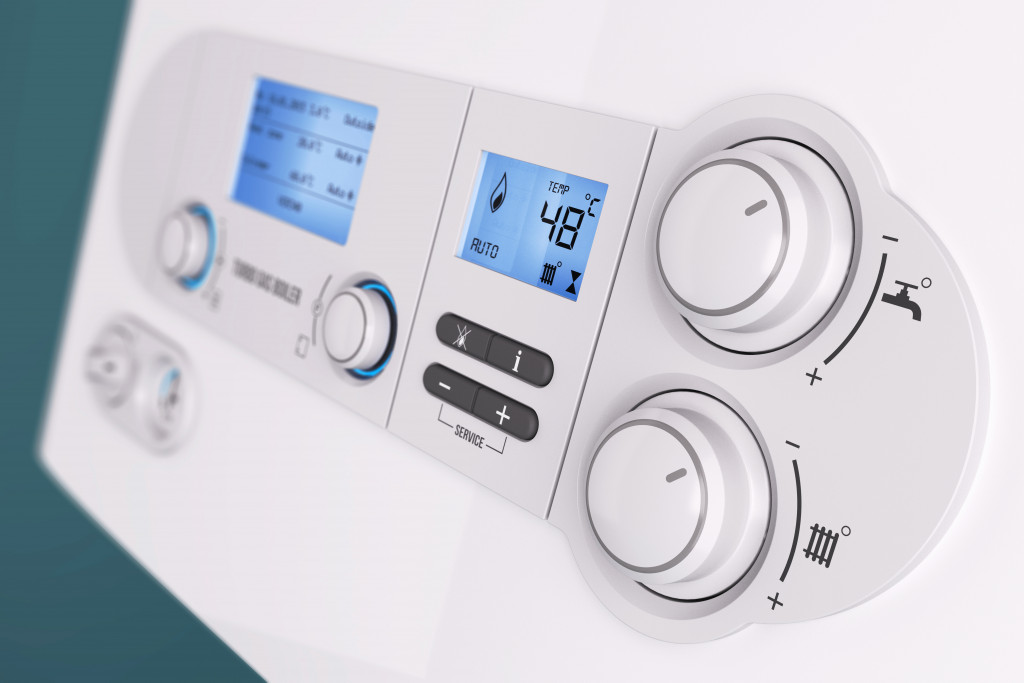If you remember your science classes back in school, there are three types of heat transfer. In this case, it’s conductive, convection, and radiant heat.
Conductive heat happens when objects in different temperatures come together in direct physical contact. The warmer object transfers heat into the colder object until they’re both at the same temperature. For example, when frying an egg, you wait for the oil and the pan to reach a certain amount of temperature before you drop the egg onto it. The egg is now cooked at the same temperature as the frying pan and the cooking oil.
Different heat transfers can be used in cooking, depending on what you’re cooking and how you want it done.
On the other hand, convection heat occurs when a hot object is put in a fluid matter, like water or air. Convection heaters use air as a tool to transport heat throughout the room. It’s either they warm up the air and blow it out into the environment to distribute, or they just warm up the air and let it spread out naturally. This is used in room heating systems like fireplaces and furnaces.
Radiant heating occurs when infrared radiation transfers heat. Infrared energy from radiant heaters travels out in invisible electromagnetic waves that absorb whatever objects are in their way. This kind of heating is used in microwave ovens and ceramic infrared heaters.
What Kind of Heat Transfer Do Heaters Use?
Residential heaters typically use convection and radiant heaters. They are used for different purposes like centralized or direct heating.
Heat is hard to spread and distribute evenly in rooms with inefficient insulation, drafts, or with wide spaces or high ceilings. In big rooms, you’re going to need over one convection heater unless you have proper insulation and don’t have air leaks or drafts.
On the other hand, infrared or radiant heaters can’t warm up anything that isn’t anywhere near their path. Because of their confined heat, they provide heat directly and immediately. So you have to be close to the heater to warm up.
Convection heaters are less efficient and slower to heat up, but they do well in enclosed spaces and allow you to move around while keeping warm in the long term. Radiant heaters provide instant warmth to people or objects you place in front of them and can even be used outdoors.

Convection Heating vs. Radiant Heating
If there is still something unclear to you, here’s an easy way to differentiate these two kinds of heating by their different aspects: speed, retention, efficiency, and comfort.
Speed and Retention
Radiant heaters are much faster to heat objects than convection heaters, and they don’t heat air for it to distribute. Radiation travels faster than convection, after all.
If you prefer faster heating, a radiant heater is your guy. But if you don’t mind waiting and want the entire room to benefit from heat, then go with a convection heater.
Since convection heaters heat the air, the environment will stay warm for a few hours after you turn them off. While it takes time to warm up a room, it also takes time for the heat to fade away. When you turn infrared heaters off, they lose their heat instantly, just like how fast they heat objects.
Efficiency
Both types of heaters are efficient depending on how you them and what you’re using them for. Of course, they are efficient when used the right way.
Radiant heaters are best if you use them to warm up just specific spots in the room since they provide directional heat and control where the heat hits. This is how they keep you warm if you’re directly in front of them, even in a large room. Heat stays in one direction and doesn’t require much energy.
Convection heaters are most efficient in keeping more objects and more people in whichever part of a room they’re in. They warm up the air and blow it throughout the space, benefiting everything and everyone without direct contact.
Noise and Comfort
To speed up heating, convection heaters usually come with a built-in fan to distribute air faster across the room, creating loud noises. In contrast, radiant heaters don’t make any noise since they don’t require a fan to warm up. Instead, they use light radiation.
As personal heaters, both types have their pros and cons. Some heaters might not be as warm as others, but they might keep your space or room warmer for longer. Others might only be effective when home builders or designers ensure other factors such as insulation are in place. It’s your choice to decide which ones are best for you and your needs.
